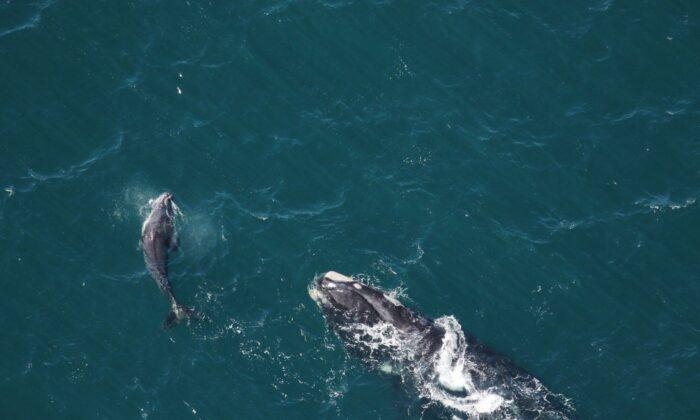A new study says the population of critically endangered North Atlantic right whales is continuing its downward trend.
The North Atlantic Right Whale Consortium says its latest estimate stands at 340 animals as of last year—a decline from 348 recorded in 2020.
The Boston-based consortium, which includes more than 200 conservation, government and industry organizations, says female right whales are getting smaller and are having fewer calves.
The consortium says only 15 calves were born in 2022, far below the average of 24 reported in the early 2000s.
As well, the group determined there were no first-time mothers this season, which supports earlier research showing a downward trend in the number of female right whales capable of breeding.
Meanwhile, recent research has found evidence that the remaining whales are getting smaller, partly because of frequent entanglements in fishing gear, with smaller female right whales producing fewer calves.
Though the overall population decline has slowed, the number of right whales is now roughly the same as it was in 2001.
So far this year, there have been no detected right whale deaths, but scientists remain worried about the species—the most endangered large whales in the world.
“There has been a lot of focus on the fact that no right whale mortalities have been detected in 2022, which is certainly a good thing,” Scott Kraus, the consortium’s chairman, said today in a statement.
“While we can be cautiously optimistic about this, we know that only one third of right whale deaths are observed, so it is likely that some whales have died this year that were not observed. Additionally, we continue to see unsustainable levels of human-caused injuries to right whales.”





